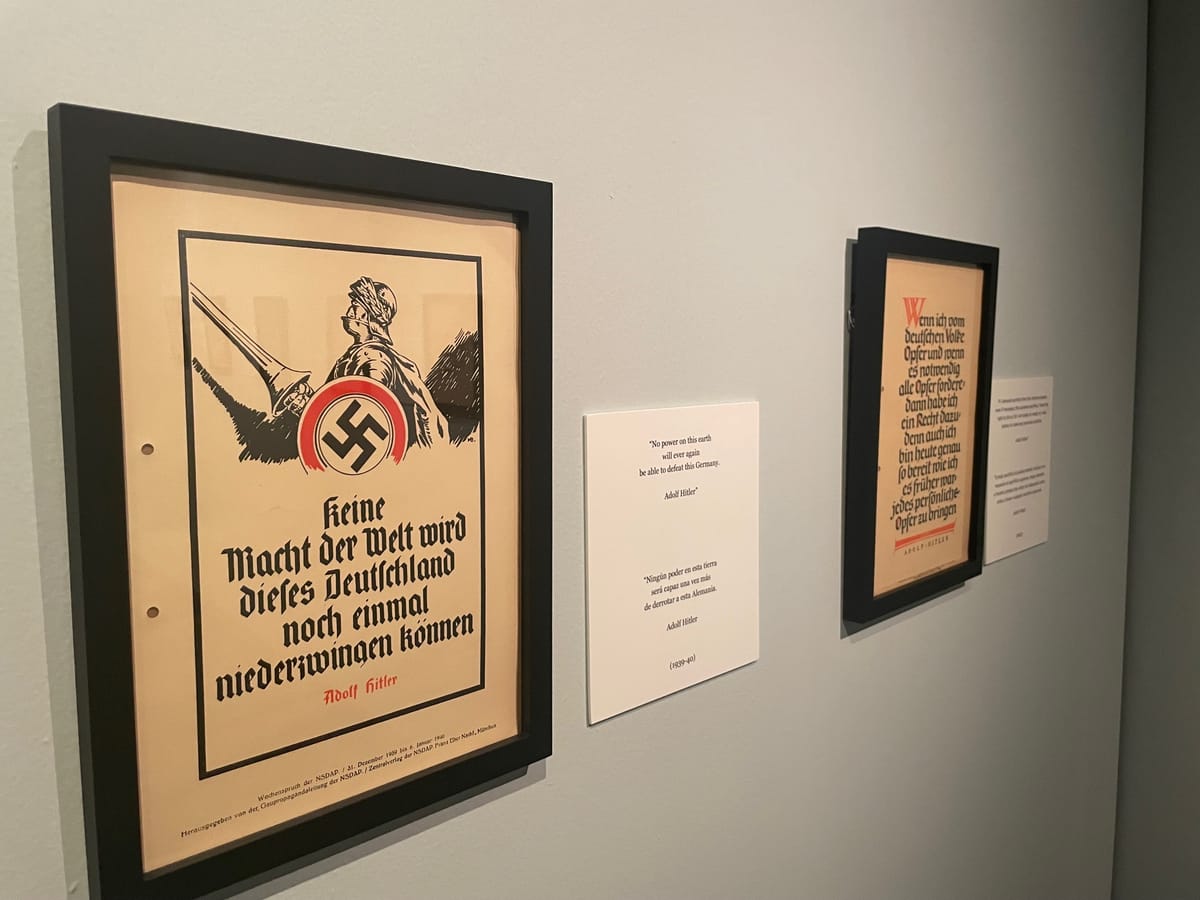The newest exhibit at The Holocaust Museum Houston includes materials and artifacts from a vault that have never been displayed before

A key component to understanding holocaust, The or otherwise, is realizing that great acts of evil still require mundane systems of enforced normalcy. There are relatively few cackling supervillains in the world. Most harm is slipped into everyday people’s 9-to-5 duties the way a dog’s pill is wrapped in cheese.
Highlighting that is part of the scattershot approach to the Holocaust Museum Houston’s new exhibit Unveiled: From the Vault, a hodgepodge of materials from the museum’s storage (with contributions from the Joan and Stanford Alexander South Texas Jewish Archives at Rice University), running through January 4 in the Josef and Edith Mincberg Gallery. Many of the materials have never been displayed before.
“All museums have more in storage than they can display,” said Trevor Boyd, associate director of collections and exhibitions during a preview tour. “We have a duty essentially to not only protect their memories and their legacies, but also to tell the world. I just thought, let’s do kind of highlights from our storage from our vault and tell the stories that we’re not always able to tell.”
One of the most disturbing parts of Unveiled involves money. After World War I, Germany saw a sharp rise in both inflation and antisemitism, with the latter often used to excuse Germany’s loss in the war as an act of internal sabotage. Desperate, some principalities in the Reich began printing their own paper money. Unveiled has an example blown up to poster size. As a symbol of national pride, the mark is decorated with a depiction of a Jewish family being burnt at the stake in Sternberg in 1492.
That is not the only way daily currency was used to further the Final Solution. In Jewish ghettos, residents were denied access to marks and instead given scrip similar to what was used in company stores during the U.S. mining boom. Unveiled collects both general currency and specialty coins used for simple human needs like a shower. The fact that Jewish humanity was being erased using cash is a subtle bit of Nazi devilry as Jews were often accused of a banking cabal that had ruined Europe. The most disturbing thing about all these hate bucks is how professional they all look.
“I think it’s particularly unsettling where they actually put effort into the design,” said Boyd. “It’s even more kind of dehumanizing in a way they’re trying to make your oppression look pretty.”
The timeliest part of the exhibit is the collection of Nazi propaganda. Every example is about the size of a sheet of notebook paper, all neatly lined up on the wall. They cover various subjects, from references to dead kings to promises to make Germany great again. There are a handful of more overt antisemitic materials, including offensive Jewish caricatures. There’s even an editorial from a Houston newspaper that basically asks “were the Jews asking for it?” Visitors looking to see the gnarlier side of hate will have no trouble getting their fill.
But it’s the stylized posters that make your skin crawl. It’s far too easy to compare their slickness with radical right-wing AI-generated images used to shore up mass deportations and other cruel activities in America. The Nazis may have had to get an artist to paint the pictures and put them up on street corners by hand, but there’s no mistake that Unveiled is a showcasing a proto-meme culture. The goal was the same then as it is now: lure young men into extremism with pretty pictures, hero narratives, and righteous hate.
“It’s not just memes,” said Boyd. “These are real lives.”
All this hate is small compared to the collection’s grandest piece. After the war, Houston Jews did their best to heal and move beyond the nightmare. Some, like Adele Heyman, spent years helping refugees build new lives in the city, finding food, shelter, and work for victims of The Holocaust as leader of the Refugee Services Committee of the Jewish Community Council (now the Jewish Federation of Greater Houston).
At Temple Beth Jacob, Houston’s oldest Orthodox synagogue, members sewed an eight-foot tall banner that honored the 212 Jewish men and women from Houston who served in World War II. The banner is brilliant red, with names highlighted in stars. Those who died in combat earned an additional honor, gold stars that stand out like the last rays of light from a setting sun.
This banner dwarfs the propaganda and dehumanizing money. When you enter the exhibit, it stands like a sentinel waiting at the end of the journey, a monolith of endurance over the systemic oppression that necessitated its creation. In a collection dedicated to the nuts and bolts of everyday marginalization, it’s the one piece that truly extraordinary. A hopeful interpretation is that humans can endure horrible atrocities and still survive as a community. A less hopeful one is that resistance is extraordinary while complicity with evil is just a Monday.
“I wanted it to be kind of a beacon when you turn the corner, when you first enter and we see this here,” said Boyd. “Here is the active community support and something beautiful coming out of all that.”
“Unveiled: From The Vault” runs at The Holocaust Museum Houston until January 4, 2026
Great Job Jef Rouner & the Team @ Texas Signal Media Foundation Source link for sharing this story.





